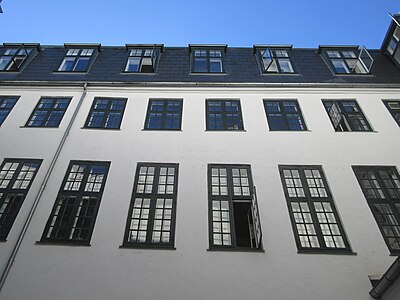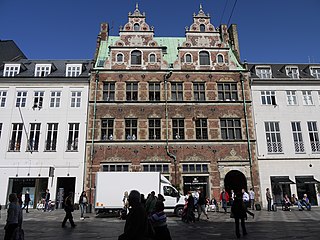
The Matthias Hansen House, formerly also known as the Schoustrup House, is a Renaissance-style townhouse on Amagertorv in central Copenhagen, Denmark. Built in 1616, it is one of few buildings of its kind which has survived the Copenhagen Fires of 1728 and 1795. The building is now home to a flagship store for the Royal Copenhagen porcelain factory.
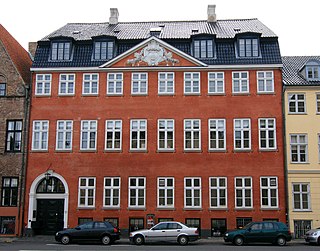
The Behagen House is a Neoclassical townhouse located at Strandgade 26 in the Christianshavn neighbourhood of Copenhagen, Denmark. The building was listed on the Danish registry of protected buildings and places in 1918.

The Krak House is a Neoclassical property overlooking the square Nytorv in the Old Town of in Copenhagen, Denmark. It takes its name after the publishing house Kraks Forlag which was based there for many years. The Danish Centre for Culture and Development, a self-governing institution under the Danish Ministry of Foreign Affairs, is based in the building.
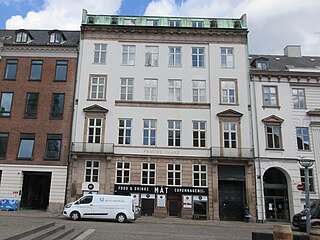
The Frisch House is a Neoclassical property overlooking the square Nytorv in the Old Town of Copenhagen, Denmark. The building was designed by the artist Nicolai Abildgaard although it has later been expanded with an extra floor. A room on the first floor features four Abildgaard paintings with scenes from Voltaire's Le Triumvirat.
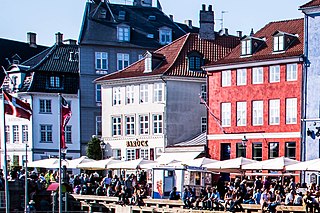
Nyhavn 1 is an 18th-century property at the acute corner of Nyhavn with Store Strandstræde in central Copenhagen, Denmark. It was listed in the Danish registry of protected buildings and places in 1987. Notable former residents include actor and singer Peter Schram (1819–1895).

The Verrayon House is a Rococo, bourgeoisie townhouse located at Lille Strandstræde 6 in central Copenhagen, Denmark. It was listed by the Danish Heritage Agency in the Danish national registry of protected buildings in 1943.

Amaliegade 4 is a historic property located in the Frederiksstaden Quarter of central Copenhagen, Denmark. It was built for sugar manufacturer Christian Rønnenkamp in 1829 and was listed on the Danish Registry of Protected Buildings and Places in 1950. Other notable former residents include politician Christian Albrecht Bluhme and painter Viggo Johansen.
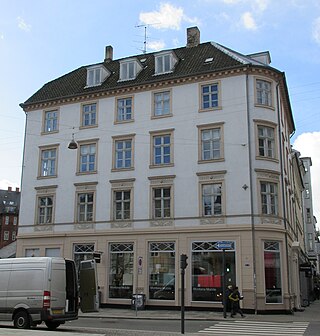
Bredgade 24 is a listed building located at the corner of Bredgade and Sankt Annæ Plads in central Copenhagen, Denmark. The building was listed on the Danish registry of protected buildings in 1987. Notable former residents include painter and photographer Niels Christian Hansen.

Gammel Strand 50 is a Neoclassical building overlooking Slotsholmens Kanal in central Copenhagen, Denmark. It was constructed as part of the rebuilding of the city following the Copenhagen Fire of 1795. The building was listed on the Danish registry of protected buildings and places in 1918. Notable former residents include the musician Holger Simon Paulli, chemist Christen Thomsen Barfoed and author Hans Vilhelm Kaalund-

The Obel House is a Neoclassical property located at Vestergade 2 in the Latin Quarter of Copenhagen, Denmark. It was listed on the Danish registry of protected buildings and places in 1918.

Vestergade 1 is a Neoclassical property located at the corner of Gammeltorv and the street Vestergade in the Old Town of Copenhagen, Denmark. The facade towards Gammeltorv and Vestergade meet in an Obtuse angle with four bays towards the square and five bays towards the street. The building was listed in the Danish registry of protected buildings and places in 1950. Café Gammel Torv, a traditional Danish lunch restaurant, has since 1910 been based in the basement at Gammeltorv 20. The building/restaurant is now colloquially known as The House With The Green Tree after an eponymous 1942 novel by Kalvin Lindemann.
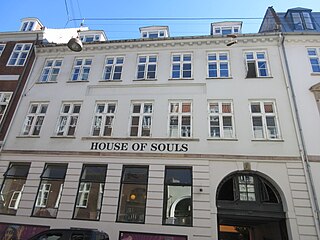
Vestergade 3 is a Neoclassical property in the Old Town of Copenhagen, Denmark. The building was constructed as part of the rebuilding of the city following the Copenhagen Fire of 1795. It was listed in the Danish registry of protected buildings and places in 1959. Notable former residents include the clergy Christian Bastholm and the painters Albert Küchler and Jørgen Roed.
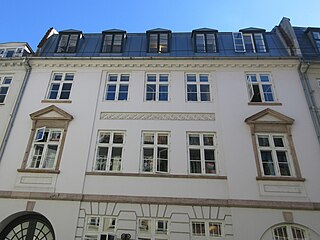
Vestergade 5 is a Neoclassical property in the Old Town of Copenhagen, Denmark. The building was constructed for the owner of the tobacco manufacturer Chr. Augustinus Fabrikker in 1797 and the company was until 1870 based in the complex. It was listed in the Danish registry of protected buildings and places in 1918.

Gammel Strand 42 is a historic property overlooking Slotsholmens Kanal and Slotsholmen in Copenhagen, Denmark. The building was constructed as part of the rebuilding of the city following the Copenhagen Fire of 1795. It listed on the Danish registry of protected buildings and places in 1945. Notable former residents include the surgeon Ludwig Lewin Jacobson, naval officer Lorentz Fjelderup Lassen, jurist F.C. Bornemand (1810–1861) and artists Harald Slott-Møller (1864–1937) and Agnes Slott-Møller.

Gammel Strand 38 is a Neoclassical property overlooking Slotsholmen Canal in the Olt Town of Copenhagen, Denmark. The building was listed in the Danish registry of protected buildings and places in 1945. Krogs Fiskerestaurant, one of Copenhagen's oldest fish restaurants, occupies the ground floor of the building. Notable former residents include author Thomasine Gyllembourg and her son Johan Ludvig Heiberg, banker Gottlieb Abrahamson Gedalia and chocolate manufacturer Anthon Berg.

Skindergade 44 is a Neoclassical property situated on Skindergade, off Gammeltorv, in the Old Town of Copenhagen, Denmark. It was listed in the Danish registry of protected buildings and places in 1945.

Brolæggerstræde 4 is a Neoclassical property situated in the Old Town of Copenhagen, Denmark. Like most of the other buildings in the area, it was constructed as part of the rebuilding of the city following the Copenhagen Fire of 1795. The three-winged complex was listed in the Danish registry of protected buildings and places in 1950.

Vestergade 15 is a Neoclassical property situated at the corner of Vestergade and Kattesundet in central Copenhagen, Denmark. The building was listed in the Danish registry of protected buildings and places in 1918. Notable former residents include the Icelandic-Danish lawyer Brynjólfur Pétursson.
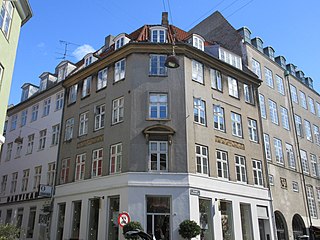
Læderstræde 36 is a Neoclassical building situated at the corner of Læderstræde and Hyskenstræde in the Old Town of Copenhagen, Denmark. The property was for around 100 years, from 1722 until some time after 1806 the site of a distillery. The adjacent building Hyskenstræde 9 was part of the same property until 1845. The two buildings were both constructed as part of the rebuilding of the city following the Copenhagen Fire of 1795, although the building in Hyskenstræde was subject to comprehensive alterations in 1834. The two buildings were individually listed in the Danish registry of protected buildings and places in 1964.
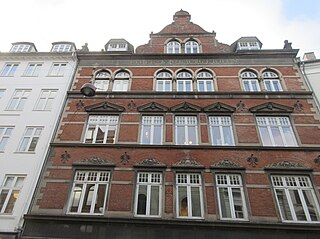
Lille Købmagerhus is a Renaissance Revival style building situated on Købmagergade in Copenhagen, Denmark. It was constructed in c. 1800 for coffee retailer Christian P Hansen to designs by architect A. B. C. von Düben. The inclusion of "Lille" in its name destinguishes it from the slightly older and somewhat larger Købmagerhus further down the street. Peder Hvitfeldts Stræde 4, a three-storey building from 1812 on the other side of the block, is also part of the property. Notable former residents of Peder Hvidtfeldts Stræde 4 include the philosopher Frederik Christian Sibbern, botanist and politicianJoakim Frederik Schouw and architectPeter Kornerup. The property is today owned by Kirkebi A/S.






